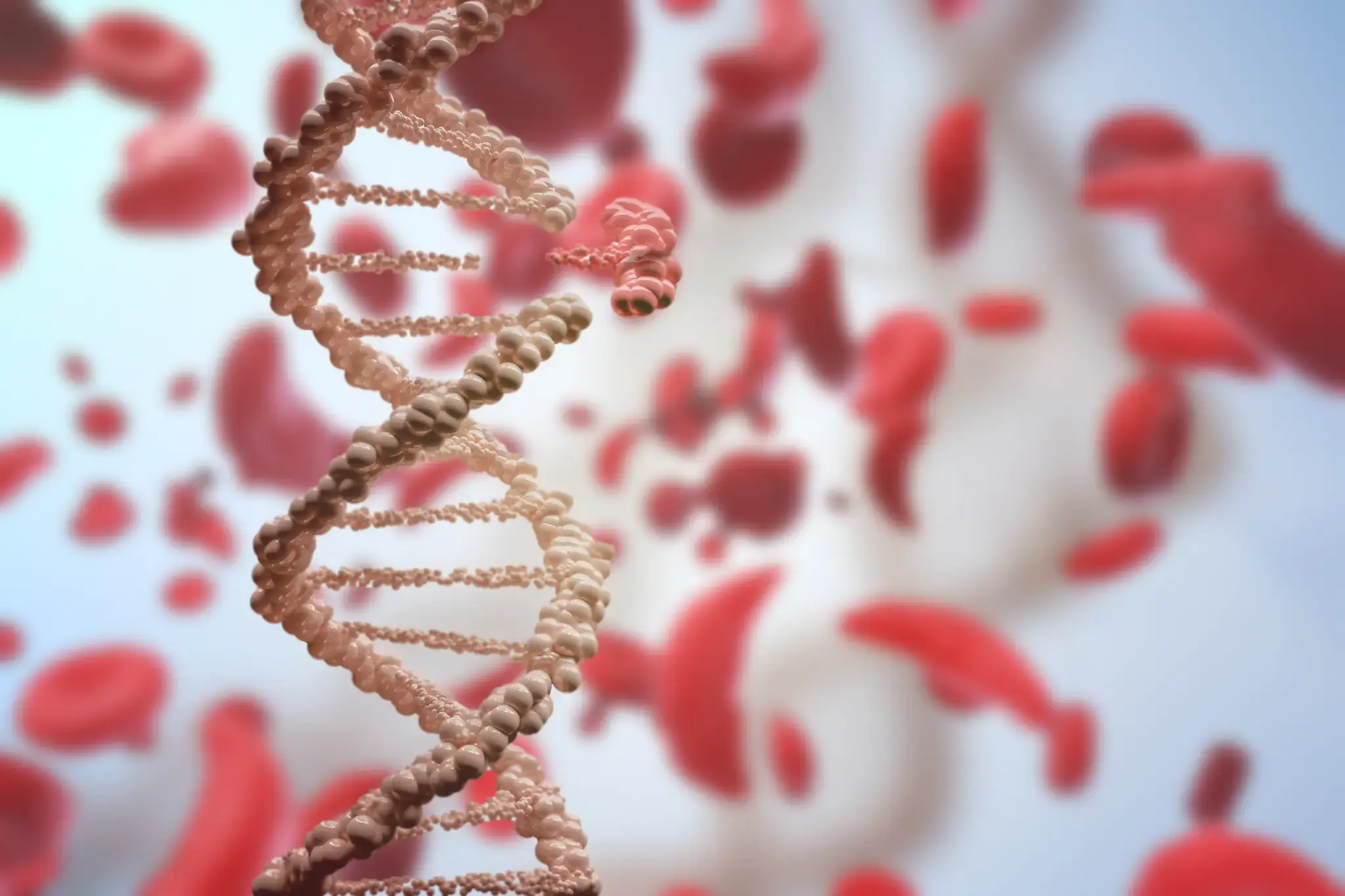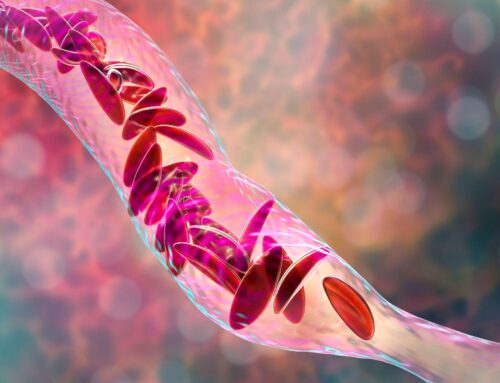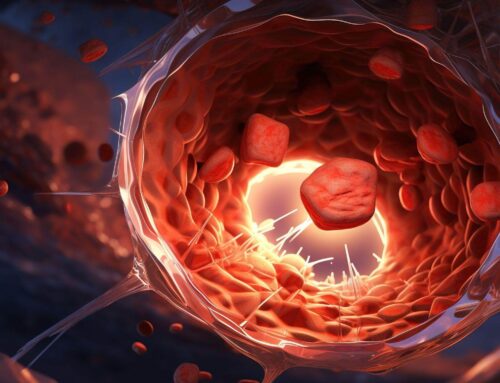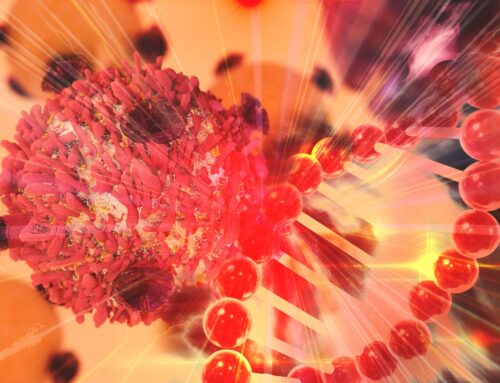Looking for something?
Exa-cel: A Potential Breakthrough with Astounding Results

A new therapy that uses the Nobel Prize-winning CRISPR technology may be the latest breakthrough in gene editing therapy. Exagamglogene autotemcel (exa-cel), developed by Vertex Pharmaceuticals and CRISPR Therapeutics, addresses two debilitating blood disorders: sickle cell disease (SCD) and transfusion-dependent beta-thalassemia (TDT). If approved, it will mark the world’s first therapy based on CRISPR technology and could transform the lives of people suffering from these blood diseases.
Sickle Cell Disease and Transfusion-Dependent Beta-Thalassemia: debilitating diseases requiring frequent hospitalizations
Both sickle cell disease (SCD) and transfusion-dependent beta-thalassemia (TDT) are caused by hemoglobin mutations. In SCD — which affects one in every 365 Black or African-American births — a mutation causes the sickling and clumping of red blood cells, which prompts a painful inflammatory vaso-occlusive crisis (VOC) and the bursting of red blood cells that leads to anemia, chronic organ damage, strokes, severe pain, and premature death (1).
Like SCD, TDT patients require multiple hospitalizations for vaso-occlusive crises (VOCs), and treatment, in severe cases, requires frequent blood transfusions every month (1). Typically, during fetal development, fetal hemoglobin is naturally present but is silenced and switched to the adult form after birth. However, with TDT, the lack of adult hemoglobin results in patients having little to no oxygen-carrying capacity (1).
Exa-cel’s target population is the approximately 32,000 individuals in the US and Europe with severe forms of these diseases; these patients require multiple hospitalizations each year for VOCs and rely on frequent blood transfusions. As the therapy waits for the approval of the Food & Drug Administration (FDA) and European and UK agencies, the urgency for an effective cure for SCD and TDT patients remains.
The Promise of Exa-cel: a one-time functional cure?
Exa-cel is an autologous, ex vivo CRISPR-Cas9 therapy that edits the patient’s blood stem cells to produce high levels of fetal hemoglobin (HbF) in red blood cells. The oxygen-carrying HbF is naturally present during fetal development but usually shuts down after birth. However, higher levels of HbF are associated with reduced symptoms and improved outcomes in people with SCD and TDT. The exa-cel therapy increases HbF, thus alleviating transfusion requirements for TDT patients, and reducing painful sickle crises for SCD patients.
Exa-cel uses the precise DNA-cutting ability of a CRISPR–Cas9 nuclease to silence BCL11A —a repressor of the HbF gene — in hematopoietic stem and progenitor cells (HSPCs) collected from the patient’s bone marrow and edited ex vivo, or outside the body (1). Patients then require bone marrow ablation therapy to remove any defective blood cells, and the edited HSPCs are re-infused (1). The re-activation of the fetal hemoglobin gene creates proteins that can counteract the mutation (1).
“By reactivating a naturally occurring developmental process, exa-cel restores fetal hemoglobin production and thereby can ameliorate the course of these diseases,” said Haydar Frangoul, MD, Medical Director of Pediatric Hematology and Oncology at Sarah Cannon Research Institute, HCA Healthcare’s The Children’s Hospital at TriStar Centennial Medical Center. “The remarkable results based on this approach give me great optimism and confidence in the potential of this treatment for patients” (1).
The necessity of bone marrow ablation therapy can be viewed as a drawback. Martin Steinberg, a hematologist at Boston University and a member of Vertex’s steering committee for exa-cel’s development, describes myeloablative conditioning as “harsh,” leaving patients vulnerable to infections, bleeding, and other complications for about two months until the edited HSPCs engraft into the bone marrow (1). Additionally, the therapy requires a course of toxic chemotherapy before the infusion to prepare the bone marrow to accept the genetically modified cells.
Despite the difficulties associated with these methods, the data reported from clinical trials is promising and demonstrates the potential of exa-cel as a one-time functional cure, explained Carmen Bozic, Vertex Pharmaceuticals chief medical officer and Global Medicines Development and Medical Affairs executive vice-president.
Clinical Data and Patient Outcomes: “Spectacular and beyond anyone’s expectations”
The ongoing Phase III CLIMB-111 and CLIMB-121 trials are evaluating the efficacy and safety of a single dose of exa-cel in patients aged 12 to 35 in patients with TDT or SCD. CLIMB-131 is an open-label, long-term follow-up study assessing the safety and efficacy of patients who participated in the previous trials.
On June 9, 2023, updated results from the trials were announced, with the exciting news that the trials met primary and key secondary endpoints. “The updated results from both the TDT and SCD trials are remarkable and bring the promise of an autologous CRISPR/Cas9 gene-edited cell therapy one-step closer to patients who are waiting,” said Carmen Bozic, M.D.
The compelling data from the 75 patients (44 with TDT and 31 with SCD) participating in the trials revealed exa-cel infusion resulted in transfusion independence or substantial reductions in transfusion volume, with 42 of the 44 TDT patients becoming transfusion-free, even after a follow-up of 37.2 months (1). Before the infusion, the SCD patients experienced around four VOCs per year, and following the therapy, all 31 SCD patients experienced freedom from vaso-occlusive crises (1). Additionally, both patient groups demonstrated significant increases in HbF (fetal hemoglobin), with a mean proportion increase of 40% (1). Mean proportion of edited BCL11A alleles was stable over time in bone marrow and peripheral blood in both groups, as well. This is important, as it indicats successful permanent editing in the long-term hematopoietic stem cells.
“It’s been spectacular and beyond anybody’s expectations,” Steinberg remarked (1). However, he added that follow-up studies, like the CLIMB-131 trial which follows patients for 15 years, are needed to confirm if exa-cel is “truly a one-time therapy” (1).
Safety Is a Paramount Concern for Regulators
As the ongoing trials continue to reveal exa-cel’s potential as a leading gene editor, ensuring its safety is a priority (1). Of the 75 patients, two experienced severe adverse events thought to be related to exa-cel and bone marrow ablation. However, these problems were resolved (1), and no deaths, discontinuations, or malignancies related to exa-cel were experienced among the patients.
The CRISPR editing process could also introduce potential safety concerns. It is possible that during the double-stranded DNA break required to achieve gene silencing, events like large genomic rearrangements and translocations in vitro could pose a risk, explained Annarita Miccio, a scientist at the Imagine Institute of Genetic Diseases in Paris (1). However, thus far, this has not been reported in patients (1).
Challenges of Pricing Considerations
While the therapy may be a biological breakthrough, Steinberg believes it’s only a small first step in making gene therapies available to people who need them the most, with the pricing of gene therapies representing a significant challenge (1). With treatment costs of existing therapies for severe SCD patients potentially ranging between $4 million and $6 million over a lifetime, affordability and access become critical factors. This is especially true for the large proportion of patients with these conditions living in under-resourced places like countries in Africa. While Vertex and CRISPR Therapeutics have yet to mention pricing plans for exa-cel, prices are expected to be high (1).
Regulatory Milestones and Competition in the Field
Vertex and CRISPR Therapeutics are not the only companies working on a cure for SCD, although they do have an early lead over their main competitor: Bluebird Bio, which missed a deadline to file FDA paperwork for its gene therapy called lovo-cel.
Bluebird’s love-cel uses an engineered virus to insert a modified gene into the DNA of a patient’s blood stem cells, allowing the gene to produce normal functioning hemoglobin. While the methods between lovo-cel and exa-cel may differ, the results of increased hemoglobin levels are similar, with Steinberg acknowledging that so far, results-wise, there isn’t much to distinguish them (1).
Meanwhile, exa-cel, based on the results of the Phase III CLIMB-111 and CLIMB-121 trials, has submitted its biologics license applications (BLAs) to regulatory authorities, including the FDA and European Medicines Agency (EMA), marking a historic milestone for the therapy.
“This is an incredible validation for a technology that ten years ago was a paper,” says Bastiano Sanna, chief of cell and genetic therapies at Vertex. “It was like opening a bottle: when the right tool came, suddenly we could use all the science that the field had stored up for so many years” (1).
On June 8, 2023, it was announced that the USFDA accepted the Biologics License Applications for exa-cel for both severe sickle cell disease and transfusion-dependent beta-thalassemia. Priority review was granted for SCD, with a Prescription Drug User Fee Act (PDUFA) target action date of December 8, 2023. A Standard review was granted for TDT with a target action date of March 30, 2024.
Jennifer Doudna, one of the scientists credited with creating CRISPR, agrees that it’s astounding. “It was clear that having the ability to edit genomes was a powerful tool, but I don’t think any of us could have imagined how fast the field would move,” she said (1).
Additionally, the therapy has received several designations from the FDA, such as Regenerative Medicine Advanced Therapy (RMAT), Orphan Drug, and Rare Pediatric Disease designations for treating SCD and TDT. The European Commission has granted orphan drug designation, and the EMA designated it as a priority medicine.
CRISPR Pipeline Collaboration and Future Prospects
The collaboration between Vertex Pharmaceuticals and CRISPR Therapeutics has brought exa-cel to the forefront and has opened avenues for exploring CRISPR technology in other areas, such as the development of hypoimmune cell therapies for Type 1 diabetes. The two companies are also co-developing a muscle-targeted gene-editing treatment for Duchenne muscular dystrophy (1).
Other drug developers are also eagerly developing drugs that apply CRISPR technology to treat diseases. Intellia is currently using the technology to create a treatment for transthyretin amyloidosis and hereditary angioedema (1). Verve Therapeutics’ PCSK9-base editing therapy uses CRISPR to alter a single DNA base that would lower low-density lipoprotein for the treatment of cardiovascular disease (1).
Exo-cel’s future in curing SCD and TDT
Exagamglogene autotemcel (exa-cel) represents a groundbreaking gene editing therapy that can potentially transform the lives of patients with sickle cell disease and transfusion-dependent beta-thalassemia. By leveraging CRISPR technology, exa-cel offers the hope of reducing vaso-inclusive crises and the need for blood transfusions. If approved, it will achieve the landmark of being the first therapy using CRISPR technology to hit the market.
References:
- Kingwell K. First CRISPR therapy seeks landmark approval. Nat Rev Drug Discov. 2023 May;22(5):339-341. doi: 10.1038/d41573-023-00050-8. PMID: 37012339.
“The views, opinions, findings, and conclusions or recommendations expressed in these articles and highlights are strictly those of the author(s) and do not necessarily reflect the views of the Oligonucleotide Therapeutics Society (OTS). OTS takes no responsibility for any errors or omissions in, or for the correctness of, the information contained in these articles. The content of these articles is for the sole purpose of being informative. The content is not and should not be used or relied upon as medical, legal, financial, or other advice. Nothing contained on OTS websites or published articles/highlights is intended by OTS or its employees, affiliates, or information providers to be instructional for medical diagnosis or treatment. It should not be used in place of a visit, call, consultation, or the advice of your physician or other qualified health care provider. Always seek the advice of your physician or qualified health care provider promptly if you have any healthcare-related questions. You should never disregard medical advice or delay in seeking it because of something you have read on OTS or an affiliated site.”








